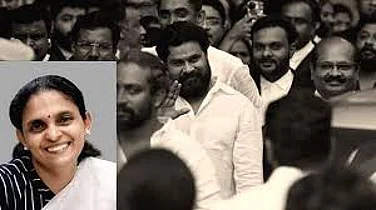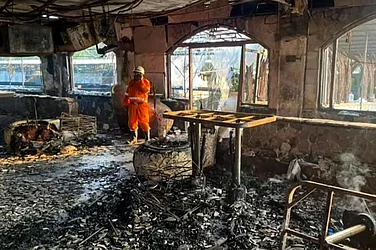The timing of the Pradhan Mantri Kisan Samman Nidhi scheme just ahead of the general elections requires no smart guesswork to be decoded. But will this scheme, which aims to give Rs 6,000 annually or Rs 500 per month to farmers holding less than five acres of land, address their needs and win back their support? Many opposition leaders have decried the “miserable” dole to farmers, which in most states is less than two days’ wages paid for farm labour.
Prabhakar Kelkar, general secretary of the RSS-affiliated Bharatiya Kisan Sangh, defends the move, calling it a “middle path” adopted by the BJP as it waits for its policy moves to deliver on the promise of doubling the income of farmers.
“For small farmers who grow just enough to meet their family needs and have no surplus to sell and make money from, this is a big help, a bonus. The percentage of farmers in this category is very large. The fact that the government has indicated that this amount may be increased in the future is seen as a very positive development by farmers,” says Kelkar, who has been interacting with farmers for feedback. “It’s a rebuttal to the pressure being exerted for a farm loan waiver by showing that there are alternative ways of boosting farmers income,” states Kelkar.
Farmer activist Sudhir Panwar, however, describes the government move as an admission of its farm policy failure. “The government appears to have accepted that after three years of record food production, it has to provide dole to farmers. Further, the farm policies implemented in the last four years have failed such that they are providing Rs 500 per month per family, though the amount is hardly of any benefit taking into account the rise in input costs.” Panwar, who is the president of the Kisan Jagriti Manch, states that the relief amount to be given to farmers will not even be enough to cover the inflation in the cost of seeds, fertilisers, diesel and electricity, among other factors.
Panjab Singh, president, National Academy of Agricultural Sciences, feels the new scheme should help farmers who have only 2-3 acres of land. But he is not so sure about whether it will make any impact on making agriculture more sustainable. “This is, in a way, better than farm loan waivers, as it would benefit them provided they use it for agriculture. However, we (agriculture experts) always say all this money should be invested in agriculture infrastructure so that it can help farmers onto a sustainable production system,” says Singh.
Abhijit Sen, a former member of the erstwhile Planning Commission, describes it as an “ill thought out scheme”. Sen says that as the scheme is entirely based on land records, it would make the rollout complicated and extremely difficult as titles to most farm lands in most states are not properly recorded. Further, as the amount is small, it is not going to make many people actually happy. “In effect, it is messy, it doesn’t pay too much and is bound to displease many. Secondly, it does little to remove distortions elsewhere as the argument for cash transfer is that once it is implemented, it will help the government to do away with subsidies and that would remove distortions. This scheme is not going to achieve any of those objectives. Instead, it could create a backlash for the government,” says Sen.
An overlooked scenario is the architectural and administrative problems the scheme is going to create for the agriculture ministry, which is to implement the scheme. “What is not spelt out is that the new scheme will eat into the agriculture ministry’s budget leaving very little funds for its core traditional function of improving agriculture productivity and helping farmers,” warns Sen.
Kelkar, however, says states too have the responsibility to help farmers when necessary as =has been done by Telangana. The Centre’s decision to invest Rs 75,000 crore for rural development through this scheme is bound to bring rich dividends, he says, adding that the move holds potential to boost market sentiments, encourage rural spending and thereby boost economic growth.
In move to win over farmers for political gains, has the Modi government yet again taken on more than it can deliver? Doles are fine, but they surely cannot deliver on the huge gaps in policy measures to make agriculture more remunerative.
***
- “The scheme is a rebuttal to the pressure for farm loan waiver by showing that there are alternative ways.”
- “The relief amount to be given to farmers will not even be enough to cover the inflation in the cost of seeds and fertilisers.”


























